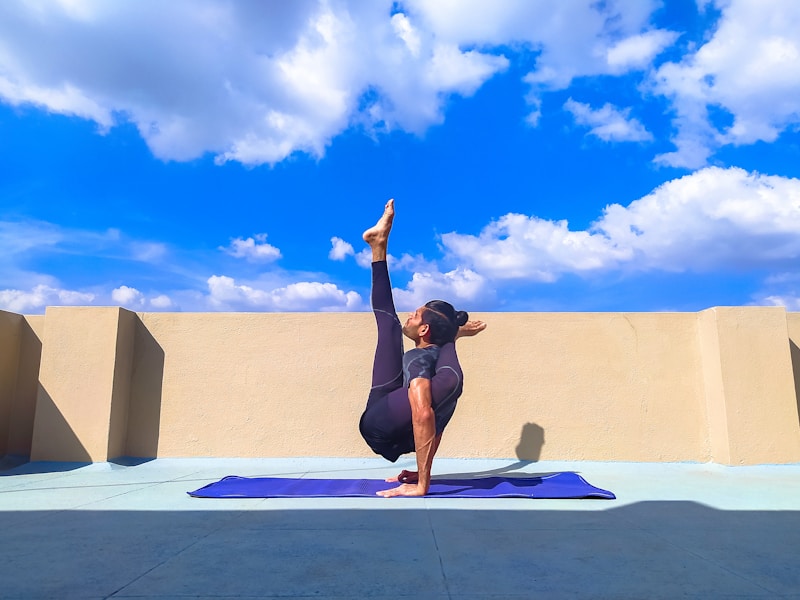Yoga is more than just stretching and breathing. Discover the ten yoga attitudes that you can cultivate towards yourself and others to lay the foundation for your whole yoga practice. Known as yamas and niyamas, these attitudes can help us further our yoga journey both on and off the mat.
Say What?
Yamas and niyamas. Not the latest cool indie band or healthy superfood, but one of the lesser-known aspects of yoga, arguably the yoga practice we should be practicing day in, day out, to really become true yogis. If you’ve been to a yoga class, you will be probably familiar with asana – the physical movements of yoga, also known as hatha yoga. You might also be aware of pranayama and meditation. But it’s less likely that the yama and niyama get mentioned in your weekly yoga class.
Yamas and niyamas are to yoga like the Ten Commandments are to the Christian and Jewish faith, or the ten virtues in Buddhism: they offer ethical and moral guidance. In the same way that yoga poses focus on different parts of the body, the yamas and niyamas give us ten different attitudes that we need to cultivate to live a yogic life.
In the sutras of Patanjali, they form the first two of the eight limbs of yoga and provide the foundation from which we can build and develop our yoga practice. Although they are the first two of the eight limbs, it is thought that every limb develops simultaneously. So if you’ve been practising asana for years but never heard of yamas and niyamas don’t panic. Chances are, you may have been practicing them without even realising!
Why are they never mentioned in class?
Well, the truth is that they probably are mentioned, but just using different terminology. Have you ever heard a teacher ask you to practice with kindness to yourself? Have you ever been invited in at the beginning of class to acknowledge any aches or pains in the body, or your energy levels that day? These two bits of advice, to be kind or truthful to yourself, are classic examples of cultivating yamas and niyamas.
Yamas and Niyamas — What’s the Difference?
Both yamas and niyamas refer to moral or ethical attitudes: yamas are your attitudes towards others, niyamas are your attitude towards yourself. Some people, like Swami Satchidananda, refer to them as disciplines, like in his translation of the Yoga Sutras where he describes them as:
“The foundation stones without which we can never build anything lasting.”
Pretty powerful stuff, hey?
What exactly are these attitudes?
The yamas can be broken down to five types:
- Ahimsa – non-violence, or kindness and consideration
- Satya – truthfulness in our speech, writing, gestures, and action
- Asteya – non-stealing, or resisting that which does not belong to us
- Brahmacharya – moderation in our actions
- Aparigraha – non-grasping, or taking only what you need
To keep it simple, there are also five niyamas:
- Saucha – purity, or cleanliness of ourselves and our surroundings
- Santosha – contentment with what we have, and do not have
- Tapas – purifying the body and mind through our diet, exercise, rest, etc.
- Svadhyaya – spiritual study, and the ability to review and evaluate our progress
- Ishvara Pranidhana – a recognition that there is a God or a higher intelligence
How Do I Use It On the Mat?
When you’re really tired and you’ve had a busy day or are recovering from an illness, do you still force yourself to go to that really dynamic, hot yoga class? Or do you allow yourself to accept the truth (satya) – that you’re really tired – and practice kindness (ahimsa) to yourself by finding a gentle restorative class, or just simply going home to rest?
How about your mindset when doing the physical asana practice? Do you allow yourself to simply enjoy the act of moving, enjoying the range that your body has that day (santosha)? Or are you constantly focused on getting to ‘the next stage’, feeling frustrated when you can’t quite get into handstand that day but the person next to you can? Without the yamas and niyamas we’re not really practising yoga, no matter how stable our headstand is.
How Do I Use It Off the Mat?
The deeper you go into your yoga practice, the more you will find that it starts to affect everything about how you live your life. From the work you do, the relationships you have, the food you eat, the choices you make – all of this can be yoga.
You may find yourself choosing to eat and drink moderately, avoiding any urge to binge and instead opt for a diet that gives you more energy – practising brahmacharya (moderation), aparigraha (non-greed), saucha (purify), and satya (truth) all at once!
You may also find yourself responding to relationships differently. You may be able to offer more compassion to that really irritating person at work (ahimsa), or more easily accept that your teenage children always leave their bedrooms a tip, even when you’ve asked them — more than once — to keep it tidy (santosha).
Even the slightly tricky niyama about ‘worshipping God’ can be useful in today’s society. God may not feel like the right word for you, but this is really about accepting that there is a greater power beyond ourselves. It may be the phases of the mood, the season changes of nature, or just noticing a greater sense of awareness, consciousness or spaciousness within ourselves.
Where Do I Find Out More?
The traditional textbooks are a good place to start – perhaps get yourself a copy of the Yoga Sutras. There are loads of translations out there, so find a good bookshop and have a browse, and choose one most accessible to you. Even better, find a study group! The Sutras can seem a bit distant to modern yoga sometimes, so it can be really helpful to have a group to discuss the books as you read them – especially if you all have different translations.
As always with yoga, the age-old wisdom prevails: 99% practice, 1% theory. The best way to really understand the yamas and niyamas is to practice them. If it helps you, you could try viewing them as challenges. For example, ‘I will only drink one glass of wine with dinner instead of two, as this will help my body and mind feel fresher the next day’ or ‘I have a busy week at work next week – I will switch my regular vinyasa class to a restorative yoga class instead’. Even simply smiling at yourself when your Tree Pose (Vrkasana) is more ‘leaf in the wind’ pose, or smiling at that colleague who always irritates you in meetings by being too outspoken.
Personally, one of my favourite things about the yamas and niyamas is that you can practise them anytime, anywhere. Broken your leg? Can’t do āsana for a while? No worries – just work on your sense of santosha! Feel like your yoga practise isn’t suiting you anymore? Go back to your svadhyaya, put yourself back on track (or maybe find a new path). The yamas and niyamas are accessible to everyone, in a way that asana and pranayama sometimes aren’t. To me, this makes them amazingly exciting and intriguing!













